- +8801712698815 | +8801716226521 | +8802223327883 |
- info@albatrossbd.biz
Albatross
March 25, 2024
Plastic raw material is an integral part of our daily lives, from the disposable cups we use for our morning coffee to the parts in our smartphones. But have you ever wondered what raw materials are used in the plastic industry to create these products? The manufacturing of plastic is a complex process that involves a variety of different materials. Understanding these materials is crucial in creating high-quality products and maintaining a sustainable environment. The polymer industry relies on several key raw materials to manufacture a wide variety of plastic products. These materials can be broadly categorized into two main groups:
• Ethylene: This is the most important monomer used in the polymer industry. It is used to produce polyethylene (PE), the most widely used plastic globally. Ethylene is typically derived from natural gas or crude oil through a process known as cracking.
• Propylene: This monomer is primarily used to produce polypropylene (PP), another major plastic with diverse applications. Propylene is also obtained from natural gas or crude oil cracking processes.
• Vinyl chloride: This monomer forms the basis of polyvinyl chloride (PVC), a versatile plastic commonly used in pipes, construction materials, and medical devices. Vinyl chloride is produced from ethylene and chlorine.
• Styrene: Used to produce polystyrene (PS), a lightweight and inexpensive plastic often seen in food packaging, cups, and plates. Styrene is typically derived from petroleum or coal.
• Terephthalic acid (PTA) and ethylene glycol (EG): These two monomers combine to form polyethylene terephthalate (PET), a strong and clear plastic widely used in bottles, jars, and trays. PTA is derived from paraxylene, while EG is obtained from natural gas or crude oil.
• Plasticizers: These additives increase the flexibility and workability of polymers. Common examples include phthalates, adipates, and trimellates.
• Stabilizers: These additives protect polymers from degradation caused by heat, light, and oxygen. Common stabilizers include antioxidants, UV absorbers, and light stabilizers.
• Fillers: These additives are added to polymers to increase their strength, and stiffness, and reduce costs. Examples include calcium carbonate, talc, and glass fibers.
• Colorants: These additives add color to polymers. They can be classified as pigments (insoluble) or dyes (soluble).
• Lubricants: These additives reduce friction during processing and improve the flow of polymer melts. Examples include fatty acids and esters.
The specific type and amount of raw materials used in the polymer industry depends on the desired properties of the final product. Manufacturers carefully select and combine different monomers and additives to achieve the desired physical and chemical properties for their specific applications.

Plastic raw materials come in various types, each with its own unique properties and characteristics. Understanding the common uses and applications of each type can help demystify these materials and guide you in choosing the right one for your specific needs.
PE is a versatile plastic that is widely used in packaging materials, such as plastic bags and films, as well as in containers, pipes, and even toys. It is known for its excellent chemical resistance, durability, and flexibility, making it suitable for a wide range of applications.
2. Polypropylene granules(PP):
PP is another popular plastic that finds its uses in packaging, automotive parts, household appliances, and various consumer goods. Its high melting point, strength, and resistance to moisture and chemicals make it ideal for applications requiring durability and stability.
PVC is a widely used plastic known for its versatility and durability. It is commonly used in construction materials like pipes, window frames, and vinyl flooring. It is also found in electrical cables, medical devices, and various consumer products. PVC can be rigid or flexible, depending on the additives used during its production.
PS is a lightweight and rigid plastic that is commonly used in packaging materials, disposable utensils, insulation, and even toys. Expanded polystyrene (EPS) is widely used as packaging material for protecting fragile items during transportation.
To order or any question the product related click on the button below and fill the form, we will contact you very soon.

Albatross BD started working in
industrial market in Bangladesh
for PVC and plastic raw materials
by supplying to several categories in this sector, like Pipe, Plastic, plastic, paper, and paint industries.
Powered by Albatross Bd.| A company of Magnolia Trade Bd.
Copyright © 2024. All rights reserved by The Brand Maker
Check out our place order here for the quality PVC Raw Materials.We’re (always) here to help. Track your order. Just sign in to get started.